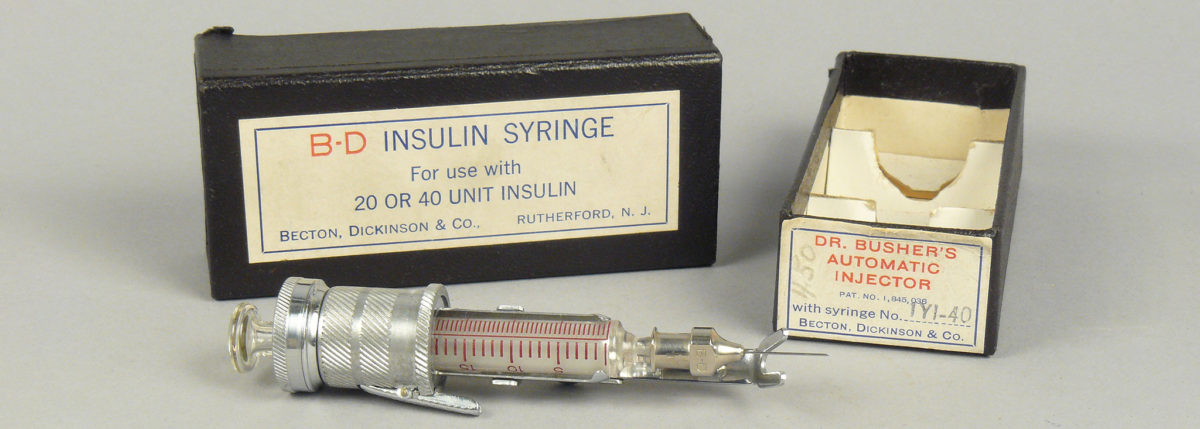The Evolution of T1D Technology
Considering how quickly type 1 diabetes technology has been advancing over the recent years, it is very easy to get comfortable with those tools available to us today. There isn’t much of a reason to think back on how it was in the early days of type 1 diabetes (T1D) management, but wouldn’t it be fun?
Let’s pay homage to where all of our gadgets got their start—how they were born—who their ancestors were, if you will. Looking back can only give us more to look forward to. So let’s do some comparisons: T1D “firsts” vs. Now!
First Glucose Meter
The first blood glucose meter was invented in 1971 by Anton Hubert Clemens. The meter was able to give an approximate blood glucose (BG) number by reading reflecting light from a test strip (Dextrostix) that would produce a color after applying a drop of blood. The meter itself would indicate the number with a swinging needle mechanism. These machines were only available in doctors’ offices and hospitals.
NOW
Blood sugar meters available to us today are small, easy to use, and give us an accurate reading within seconds, with so many models to choose from depending on preference and insurance. Some even come in snazzy colors!
First Insulin Pen
The first insulin pen was simply referred to as a “painless diabetes syringe,” invented by Swedish manufacturer Helinos, and sold from 1954 to 1986.
NOW
Today, we can choose from many different insulin pen options, both fast acting and long acting, i.e.: NovoLog, Humalog, Lantus and Levemir. All pens are very small and easy to use! We can choose between using disposable pens or changing the cartridges. Most pens can dial up by unit and/or half unit increments.
T1Ds are also enjoying the advent of the smart pen, thanks to groundbreaking diabetes tech like that of Companion Medical’s InPen. The InPen combines an injector pen, Bluetooth technology, bolus advisor and a smartphone app to create a convenient, contained smart delivery system for those on multiple daily injections (MDI) or those who might need a pump break.
First Insulin Pump
The first insulin pump, invented in 1974, was called the Biostator. It was approximately the size of a microwave oven, and it was able to measure blood glucose levels and dispense insulin into the body every five minutes. Because it was so large in size, it was used only to treat cases of diabetic ketoacidosis (DKA.)
Fun Fact: Because of the Biostator’s ability to monitor BG levels continuously, it technically counts as the first continuous glucose monitor (CGM)!
NOW
Insulin pumps now come in all shapes, sizes and colors—most use tubing for insulin delivery, save for the OmniPod which offers a wireless experience. Some of the most widely used pump models today include the Animas Ping, Medtronic MiniMed, OmniPod, and T:Slim. Select insulin pumps can now even work in concert with CGM.
CGM: NOW
By the receiver (or mobile device!), transmitter and sensor communicating together, current Continuous Glucose Monitoring systems such as Dexcom and Freestyle Libre allow for nearly seamless BG observations and notifications throughout the day. As previously mentioned, CGM systems can now be integrated with certain insulin pumps.
Check out our Tools and How-to page that’s full of helpful guides and technology!









